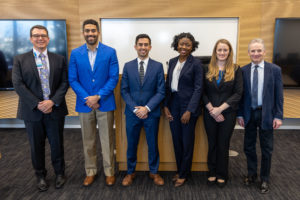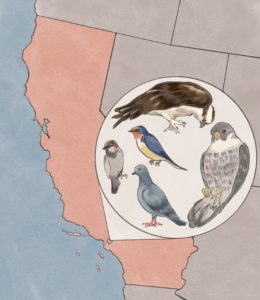This post was updated Jan. 21 at 10:28 p.m.
Scientists at the Los Angeles-based RAND Corporation, in collaboration with researchers at UCLA, have created a program to address substance use in urban Native communities.
The program, called Traditions and Connections for Urban Native Americans, was designed in a joint effort with the Sacred Path Indigenous Wellness Center in California, and the researchers’ findings were published in a November study. The researchers found that for a majority of the participants, community building and connecting with their heritage assisted significantly in substance use intervention.
The program was designed to study a community historically ignored by research that looks into reducing substance use, said Dr. Daniel Dickerson, one of the study’s authors who is Inupiaq. Native Americans and Alaska Natives – especially in urban areas – have been disproportionately affected by the opioid epidemic. Native people had the highest rate of overdose deaths among any racial or ethnic group in 2021 at 56.6 deaths per 100,000 people, according to the Centers for Disease Control and Prevention.
To address this, the researchers worked with Indigenous cultural leaders and communities to create a culturally tailored program that fit the specific needs and circumstances of participants, said Carrie Johnson, the director of the Sacred Path Indigenous Wellness Center.
“Although more Native people live in the urban areas, you may feel less connected to … other Native people and your community because of the large size of the urban population,” said Dickerson, who is an associate research psychiatrist at UCLA. “This study really sought to address this concern within the urban community to help connect younger adults to both their culture and with other Native people.”
Researchers created focus groups to hear from the community about the issues they were facing and what they wanted to see from the work TACUNA was doing, said Johnson, who is part of the Wahpeton Dakota Nation.
“We wanted to make sure … that research was done in a good way with our people,” Johnson said.
As part of the program, participants watch three videos based on the Medicine Wheel, which is central to many traditional healing practices. The videos discuss making good choices for physical health as well as spiritual health, according to the study.
Alongside these videos, the study tracked participants’ social networks and their satisfaction with the program as a whole. Participants wrote down all the people that they knew, and then the researchers would engage in questions regarding who within their social network participates in traditional Native practices, as well as who engages in substance use, Dickerson said.
As for participant satisfaction, the researchers interacted with each participant during the study as well as several months after, according to the study. Dickerson added that the participants resonated with the study and how it related to the urban experience.
Although the program had to be moved online because of concerns relating to COVID-19, the virtual format ended up being helpful as it made the program more accessible, according to the study. The program reached urban Native young adults ages 18 to 25 in 22 states.
“Young adults’ lives are super busy. A lot of the participants have kids – they have kids and jobs,” said Ryan Brown, one of the study’s authors. “The online virtual component allowed people to balance those commitments a lot more than if they’d had to travel to a site.”
Dickerson added that being able to participate from home rather than in a medical setting might have made people feel more comfortable participating in the study.
Johnson said there continues to be a lack of trust among Indigenous people toward research done relating to their communities as it is often conducted by non-Native researchers, adding that this mistrust makes it important for both Native researchers and communities to be involved in further work.
Brown said the researchers hope the study’s impact will be felt within the Native communities reached thus far. He said TACUNA’s goal is for these communities to eventually adopt preventative measures themselves, adding that in the future, the researchers hope to follow the lead of the cultural leaders and merely provide resources for assistance in conducting the research.
“Intervention that integrates culture really works,” Johnson said. “We will use it and get it out to our community.”






Comments are closed.